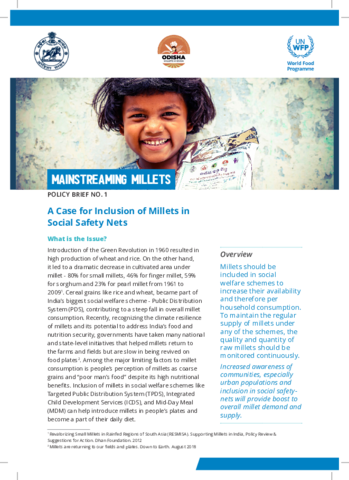
Millets are traditionally a staple food in semi-arid tropics and drought-prone regions in India. They are of high nutritional benefits providing food security and can be considered ideal crops of the 21st Century where we face depleting natural resources and an era of climate change. Other than production, the government shall also focus on increasing the per household consumption of millets, to restore the staple diet into the plates of the poor people in the country. Millets should be included in social welfare schemes to increase their availability and therefore per household consumption. To maintain the regular supply of millets under any of the schemes, the quality and quantity of raw millets should be monitored continuously. Simultaneously, they need to promote millets as aspirational food among urban people. This will lead to balanced millet demand and help rationalize millet prices in the market. Processing environment needs to be set up in panchayats/clusters to convert the raw millets into healthy and tasty products.
